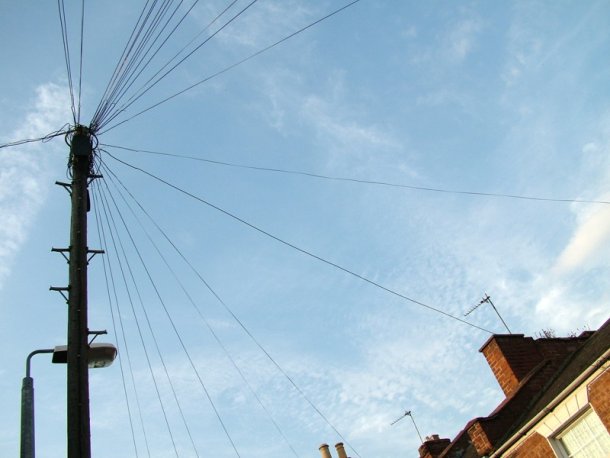Virgin Media launches overhead fibre pilot to boost network

Is it a bird? Is it a plane? No, it's 50Mbps broadband swinging from a telegraph pole...
Cable ISP Virgin Media has announced it will trial fibre broadband delivered via telegraph poles, with a view to extending its superfast network coverage to new areas.
Typically the biggest cost of deploying fibre broadband is digging trenches or carving up roads to lay the cable underground. Deploying fibre through overhead infrastructure such as telegraph poles - or pushing it down existing ducts or pipes such as sewers - offers a cheaper and faster way of extending next-generation broadband.
Virgin Media will pilot its overhead fibre broadband in the Berkshire village of Woolhampton, offering residents 50Mbps broadband during the six-month trial that will start this month. Residents will also get access to the company's TV services.

Could telegraph poles help extend the reach of fibre broadband in the UK?
(Photo credit: eyeSPIVE via Flickr.com under the following Creative Commons licence)
Virgin Media said it has identified more than a million homes it would like to hook up via overhead fibre at this time - a number that could potentially grow along with network coverage in the future.
The premises it would want to target initially for overhead fibre are in a mixture of semi rural, semi urban and rural areas, which are at the edge of the current Virgin Media coverage area, a Virgin Media spokesman said.
The company noted that changes to planning guidelines would be needed to enable large-scale overhead fibre deployments. However, the spokesman said the ISP is "hopeful there will be movement" during the Woolhampton trial period.
Overhead fibre deployment may not necessarily be a "silver bullet" for building out the UK's next-generation network infrastructure, but it could play a role as one of a variety of technologies that will be needed to extend coverage, according to the spokesman.